A Guide to Men’s Luxury Watches for Smaller Wrists
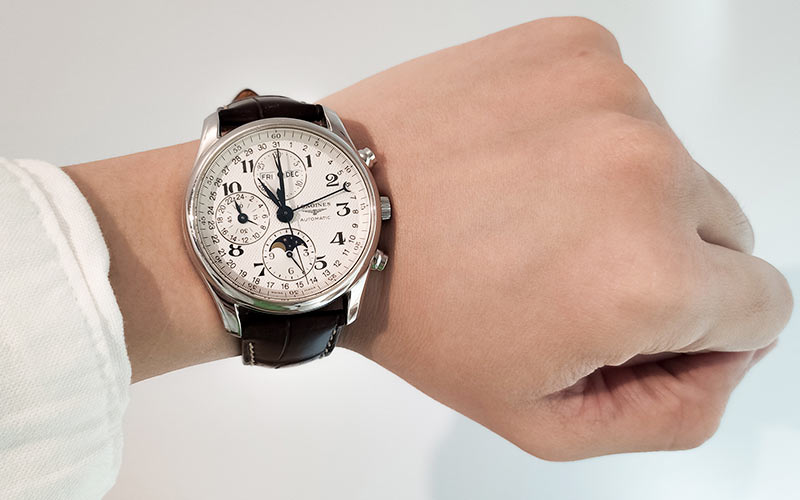
Believe it or not, having an undersized wrist is a blessing in disguise when selecting a wristwatch. It’s much easier to achieve that trendy, sophisticated oversize look when you have a small wrist. In contrast, large wristers make many watches they wear look like kiddie watches.
As a fellow small-wristed man, I have had my fair share of challenges when shopping for a wristwatch. In this article, I’ll share with you some tips I learned through personal experience as well as research. These tips will come in handy when you’re finding a watch that fits your wrists. In the second part of this article, you’ll find some luxury watches (<30k USD) I recommend for small wrists.
How to Choose to a Watch for Smaller Wrists
Like many things in life, you tend to face more challenges as you deviate from the mean. Many sizing guides are written for average or slightly larger wrists. They have their usefulness but they may not work so well for guys like me who have small wrists. Anyway, here are some watch picking tips that have worked for me personally.
1. Measuring Your Wrist
The first step is to measure your watch-wearing wrist. Many watch guides suggest taking the circumference. You can do that by wrapping a tailor’s tape around your wrist. This approach is easy and provides accurate measurement. But it’s not that useful because (1) the body watch is rigid and can’t wrap around your wrist as the tape does, and (2) many belt strap types can be shortened anyway.
Here’s what I’m recommending instead. Instead of taking one measurement, take two: width and depth.
Your wrist width is the diameter of your wrist when the face or the back of your palm is facing you. It’s the flat surface and the most important metric when shopping for a luxury watch that fits. See illustration below.
Your wrist depth is the diameter of your wrist when the side of your palm is facing you.
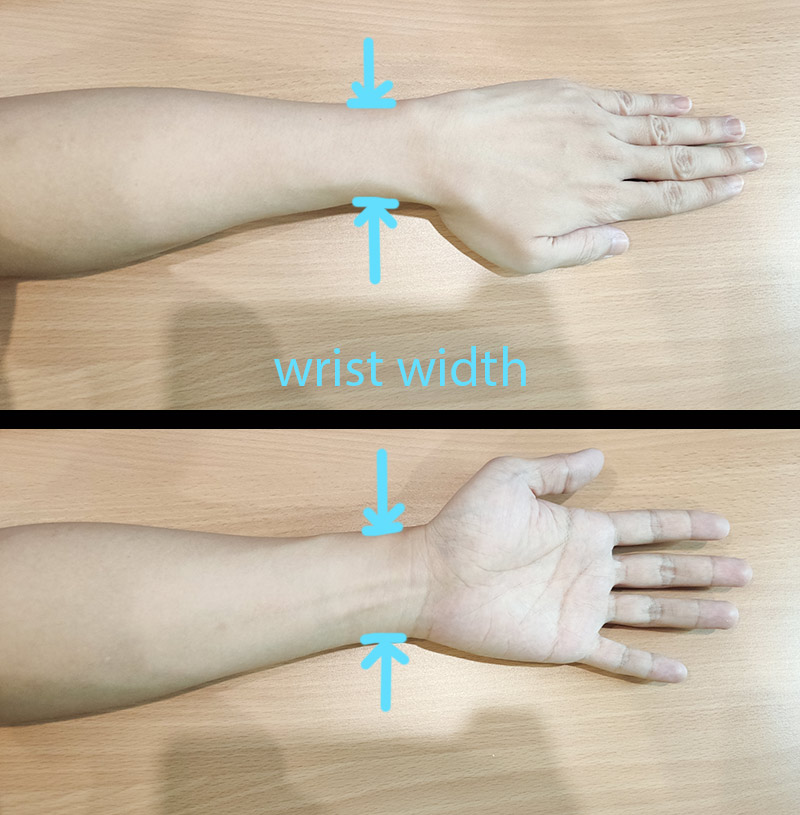
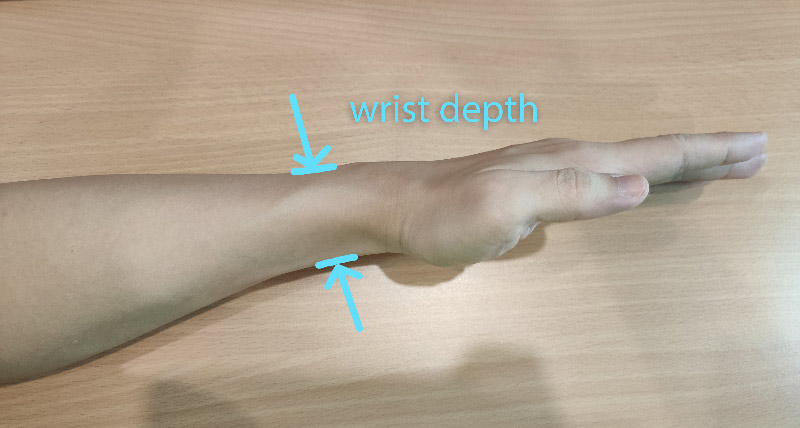
The best tool for this job is a vernier caliper but a ruler will work just fine. You don’t need the readings to be super precise.
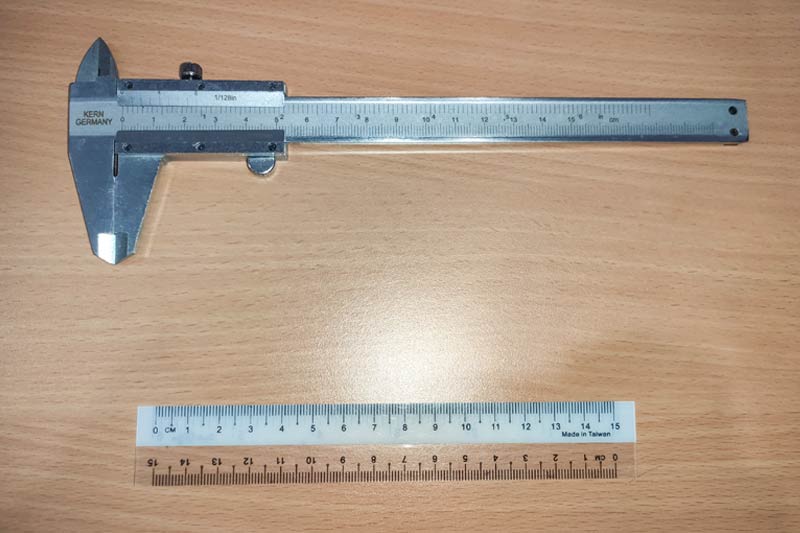
2. Watch Size
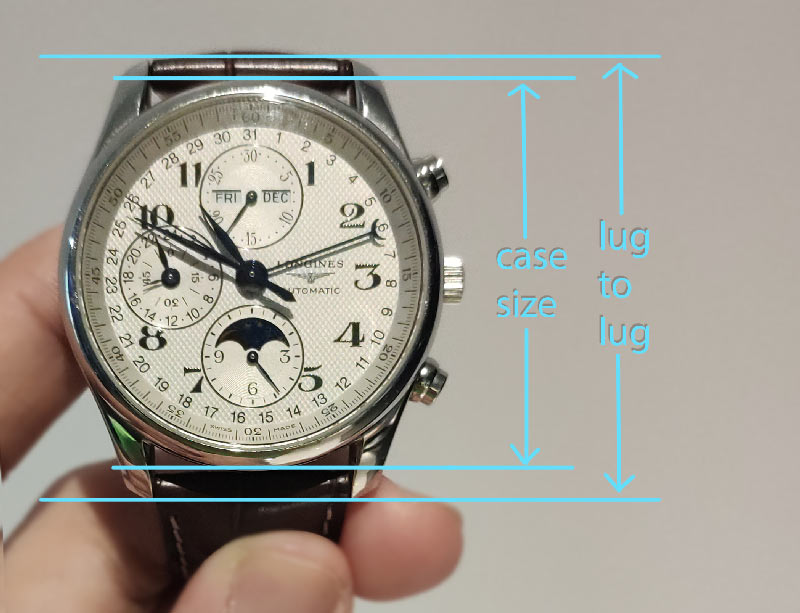
Let’s review some key watch terms relevant to watch fitting.
- Lugs are small extensions of the watch case that are used to secure the strap. They’re sometimes called horns.
- Lug-to-lug is the distance from one set of lugs to the other.
- Watch case is a container that hosts the watch movement mechanism.
- Case size is the diameter or width of the case.
Watch Sizing Rules of Thumb
Here are the rules of thumb for those of us with smaller wrists when choosing a wristwatch:
A. lug-to-lug size is smaller than your wrist width, and
B. the watch’s thickness is no bigger than one-third (1/3) of your wrist depth.
A properly fitted watch should not have lugs that extend beyond the flat surface of the wrist. In other words, the lug-to-lug should be less than or equal to the wrist width. However, there’s a problem with lug-to-lug that makes it impractical to use when researching for watches: it is not commonly available.
When researching for watches, case size is the better measurement to use. It is a popular metric and is commonly available on brand websites and watch stores. Since the case size makes up for most of the lug-to-lug, a watch should fit if the case size is smaller than your wrist. If you want to be safe, just add an extra 10% to the case size. So if the case size is 45mm, add another 10% that’s about 45+4.5=49.5mm or 50mm. If your wrist width is 45mm that watch is probably too big for you.
For my Longines watch, the lug-to-lug is about 45mm and the case size is about 40mm. This means lug-to-lug is 89% case size. Put another way, lug-to-lug is 12.5% longer than case size. So make sure you add some buffer when you’re shopping by case size.
Other Considerations When Choosing a Watch
Below are some additional points for you to consider. Personally, I don’t think these aspects are that critical but I’ve included them here for completeness.
A. Strap
The material of the strap doesn’t usually matter as long as the lug-to-lug size is kept under control. Watch straps can be shortened regardless of material, be it leather, metal, or silicone. Personally, I prefer leather for its slimmer profile and the contrast it creates with metal cases. Metal straps and metal lugs can work for smaller case sizes, but it definitely makes the watch looks extra bulky on a smaller wrist.
B. Movement
Watches with a mechanical movement (e.g. automatic and manual) are generally thicker than quartz watches because they have more mechanical parts to fit inside. Quartz watches run on circuitries and batteries. As such, they can fit into slimmer watch cases.
C. Watch Type
Typically, diving watches and chronograph watches are larger. Not saying that you won’t find any good watches from these categories, but a sizable selection of watches from these categories will not be a good fit for small wrists.
D. Case shape
When the case size is small, the case shape doesn’t really affect anything. However, if the case size is very close to your wrist width (or slightly bigger), certain case shapes will make the watch case or lugs overextends from the flat surface of your wrist. This is of course the textbook example of a bad fit. Of all options, round cases are is the easiest to fit. Shapes like square and cushion require more consideration when you have a small wrist as they’re bulkier by design.
Recommended Luxury Watches for Smaller Wrists (Under $30, 000)
While many watches are too big for those of us with small wrists, finding a fitting luxury watch isn’t a difficult task. Watch brands typically cater to all wrist sizes by releasing different size watches and wearing a big watch (big for our wrists) is a trendy thing to do. These factors really help to open up the range of available watches for us to choose from.
Anyway, the trick is to do your research first and perhaps buy online because retail stores may only carry watches that cater to average or larger wrists. Some online watch stores, such as Chrono24, even feature a watch size visualizer that allows you to visualize watches on your wrist by specifying the watch size and wrist size.
If you need some inspiration, below are some luxury watches I think are great for guys with smaller wrists.
Selection Criteria
A. Case size less than 45mm
B. Cost: Less than USD 30, 000
1. Longines Master Chronograph (Ref L2.673.4.78.3)
I love my Longines Master (reference L2.673.4.78.3). Personally, I think its 40mm case looks amazing on my small 50mm wrist (width). Currently its recommended retail price is $3,325 in the US. So it’s affordable as a luxury item. It’s no Patek but its value is incredible. The Longines Master Chronograph packs so many features: chronograph, moon-phase, date, blue-steel hands, and its unique dial face texture “barleycorn” is really intriguing to look at. All-in-all it’s an excellent automatic watch with superb build quality and value.
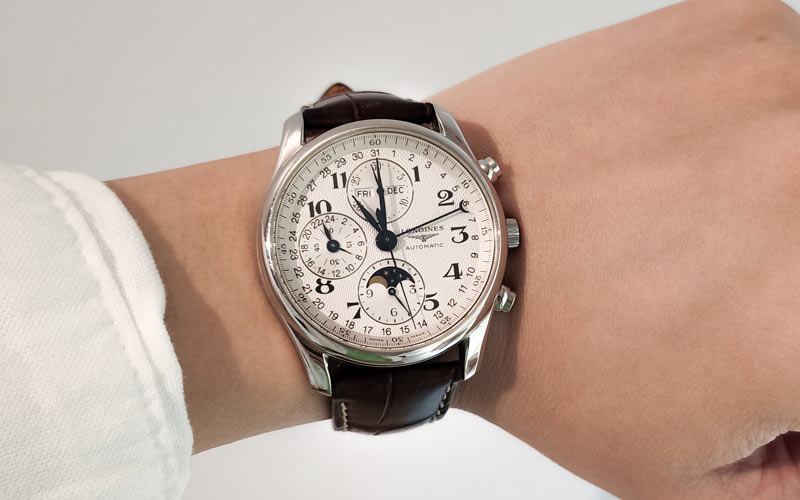
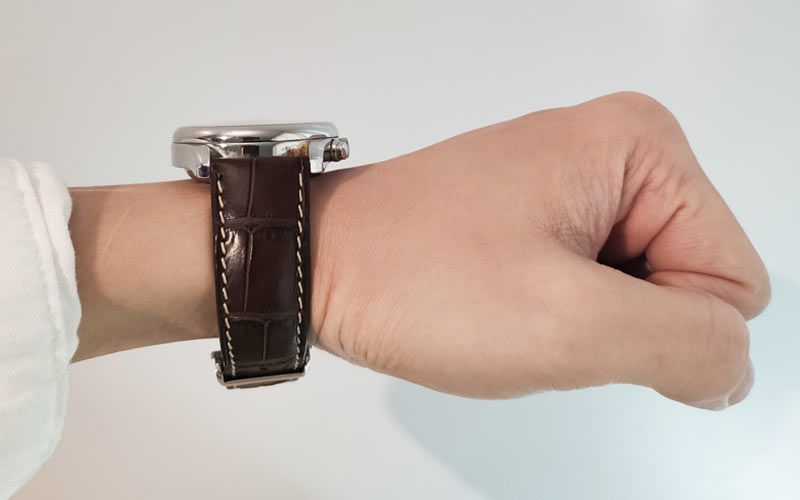
Photos: Longines Master Collection, ref L2.673.4.78.3
2. Rolex Explorer (Ref. 124270)
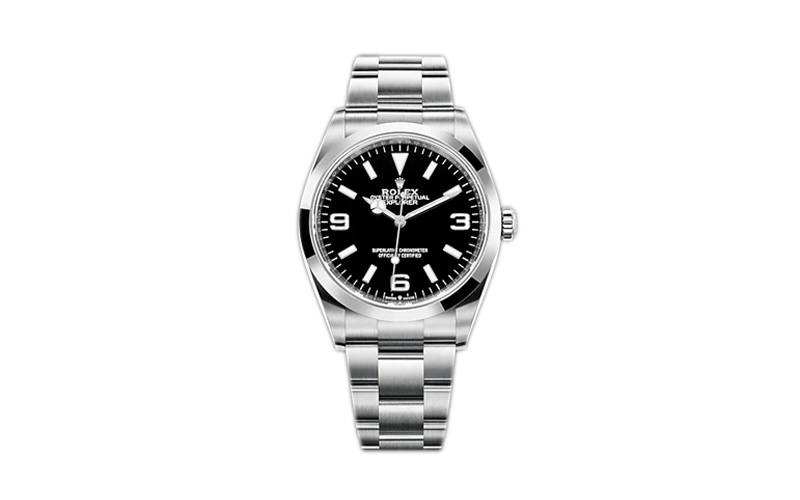
This list would not be complete without a Rolex. While Rolex may not be the most exclusive in the hierarchy of luxury watches, it certainly is the most well-known. Rolex is the gold standard of luxury watches and a symbol of success for men and women alike.
Rolex Explorer was first released in 1953 to celebrate Sir John Hunt and his team’s successful expedition to reach Mount Everest’s summit. The Rolex Explorer (not Explorer II) is either a 36mm or 39mm watch – depending on the year. It was designed as a 36mm watch prior to 2010. Explorers released between 2010 and 2020 are 39mm in case diameter. In 2021, Rolex once again released 36mm Explorers.
The Rolex Explorer ref. 124270 shown above is a new 36mm model released in 2021. Just like its predecessors, the new model features a clean and classy design with just a touch more sportiness than the Rolex Oyster. It is the perfect luxury watch to wear when you want to keep a low profile. That said, the watch’s iconic 3-6-9 numerals are hard to miss.
Where it lacks in features, it compensates with excellent build quality and readability. Rolex Explorer is a versatile watch that can be worn for any occasion.
3. Jaeger LeCoultre Master Ultra Thin Perpetual Calendar (Ref. 1308470)
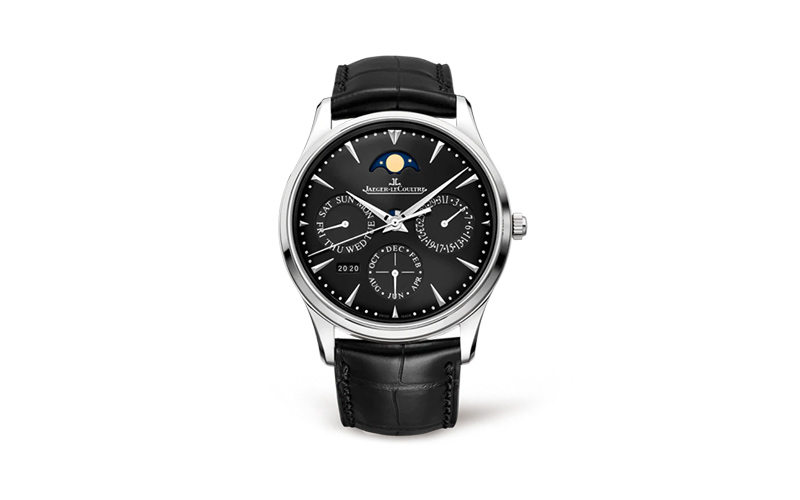
Next up we have the Master Ultra Thin series from Jaeger LeCoultre (JLC). This particular model (ref. number 1308470) is 39mm in diameter and 9.2mm thick. Its modest diameter and slim profile make it an excellent choice for many watch aficionados. What’s truly impressive is JLC managed to fit perpetual calendar complication in that small case.
Other indications include moon phase, year, day of the month, and day of the week. This watch retails for $23, 300.
4. A. Lange & Söhne 1815 UP/DOWN (Ref. 234.032)
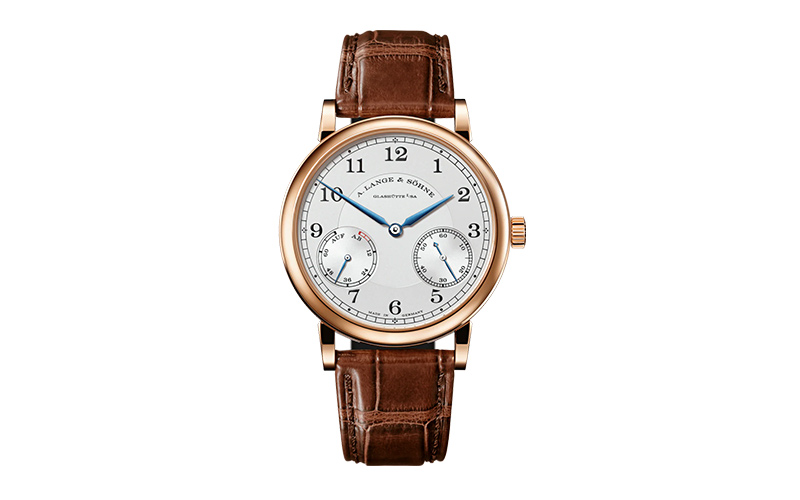
A. Lange & Söhne (Lange) is one of my personal favorite luxury watch brands. Their watches are unique and inspirational. Make no mistake, Lange watches are expensive. So with a $30k budget, we’ll be looking at entry-level collections such as the 1815 and Saxonnia series. Between these two collections, I like 1815 a little bit more because of its versatility.
In particular, the 1815 UP/DOWN (ref. number 234.032) caught my attention. The 1815 series has a long history of tradition and culture behind it but this particular model was introduced in 2013. The watch features 18-carat pink gold case, solid silver dial, and blued steel.
The watch diameter is 39mm and its thickness is only 8.7mm. Its design philosophy is no-nonsense elegance and simplicity. Its dial design is symmetrical with one subdial on the lower right at 4 o’clock that is the running seconds and the famous Auf/Aub indication at 7 o’clock. The Auf/Aub indication, also known as Up/Down, is where the watch derives its name. It indicates the power reserve level. One of the reasons for the need for a power reserve indicator is that it’s a manual movement (self-winding) watch.
The 1815 UP/DOWN retails for $31, 800 which is slightly over our $30k budget, but its material and brand recognition is worth the extra $1, 800. Chances are you’ll be able to find one cheaper than the recommended selling price.
Conclusion
Don’t be discouraged if you’re shopping for a wristwatch but have a small wrist. The trick is to do your research online. When researching for a watch that fits, focus on wrist width (the flat surface) and case size. For case size, make sure you add another 10% to account for the lugs. It’s actually more difficult to shop for a watch with the right look if you have extremely large wrists and I’ll talk about that in a future article.
